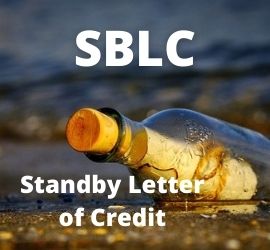A positive payment system requires the company to transmit a file of issued checks. This list is required by the bank each day checks are issued by the client. When those issued checks are presented for payment at the bank, they are compared electronically against the list of transmitted checks. The check-issue file sent to the bank contains the check number, account number, issue date, and dollar amount. Sometimes the payee name is included but may or may not be part of the matching service.
When a check is presented that does not have a “match” in the file, it becomes an “exception item”. The bank sends an image of the exception item to the client. The client reviews the image and instructs the bank to pay or return the check. There is generally a fee charged by the bank for Positive Pay. However, some banks now offer the service for free. The fee might well be considered an “insurance premium” to help avoid check fraud losses and liability.
(Source: positivepay.net)
Positive Pay Advantages
There are many ways in which positive pay is a smart form of business banking. It simplifies the check cashing process, helps a business reduce errors, and saves on labor costs. Other key advantages include:
Check Verification
Every check presented for payment is automatically verified. This includes checks presented at all banking offices. Positive pay will prevent payment of duplicate checks and protect against lost or stolen checks too.
Fraud Control
Positive pay dramatically reduces the chances of check fraud. It’s like having a set of robotic eyes to look over everything. A business has the enhanced ability to identify and return fraudulent items, including payee name suspects. A bank works with a company to verify you have actually issued/received the checks posted to the account.
Check Issuer has Final Decision
Ultimately, the business always decides whether to accept the check or not. Clients have the final call. Online banking gives clients the ability to easily monitor and make decisions about exception items and upload issue information.
(Source: tipalti.com)
Where Positive Pay isn’t enough
Positive Pay is not perfect. There are a few things to watch out for even with the service in place.
Over-the-counter fraud
Some banks don’t offer over-the-counter verification, where tellers at a retail banking location can verify incoming checks at the banking counter, using your check file. When instituting Positive Pay, make sure your bank verifies check information against all check-cashing scenarios, not just when checks are transmitted or scanned.
Payee verification
Payee Positive Pay offers a higher level of fraud protection than traditional service. Traditional Positive Pay only includes comparing check numbers, dates, and amounts. Therefore, it does not include payee verification, to ensure the payee name has not been altered. Many banks provide Payee Positive Pay as an added feature to Positive Pay. However, that may include additional fees. If you need payee verification, make sure that your software and your bank both support it.
File formats
There are several different transmission formats in which check data can be submitted to a bank. Not all banks use the same transmission format. And, some banks use different formats in different divisions. So, if your organization is programming Positive Pay as a DIY project, you may have to account for several different check file formats. Keeping up is easier if you implement Positive Pay through a third-party check writing package. These packages produce check registers in the correct format for your banks.
(Source: drvtech.com)
Positive Pay vs. Reverse Positive Pay
A variation on the positive pay concept is reverse positive pay. This is where the bank sends information about its check acceptances to the company on a daily basis. In effect, the bank only pays those checks that are approved by the company. A reverse system requires the client to monitor its checks using its own resources and manpower. As a result, a reverse system makes the client responsible to alert the bank whether or not to decline a check. In practice, if the client does not approve the checks within a relatively short time frame, the bank will be compelled to pay the checks. Therefore, reverse positive pay is not as effective as positive pay. Nevertheless, it is a cheaper alternative in the event a bank charges for the full service.
Final Words
In general, Positive Pay is a simple and effective way to prevent check fraud. It stops criminals from cashing fraudulent checks using stolen account numbers. It also catches altered checks where the amount has been changed or the check has an invalid date. Positive Pay detects mismatches in check data, but it doesn’t identify when someone forges a signature on a stolen check. Using the standard version without payee verification can allow checks to slip through. This is because the bank is not verifying the payee’s name. Nevertheless, Positive Pay is a great way to institute check fraud protection. It can stop bad payments, and reduce liability when dealing with fraudulent checks. But while Positive Pay is an effective way to catch check fraud, it is not foolproof.
The only time things can go wrong is if your company is failing to monitor the exception list (i.e. what the bank is rejecting). You must have someone assigned to the daily tasks of looking over anything that doesn’t go through. The biggest mistake to be made is allowing a fraudulent check to pass simply because no one got to the list that day. Still, the system enables a business to stay one step ahead of criminals and protect its cash flow. Implementing strategies today to ensure protection in the future means less room for error. It’s a fraud-protection system offered by most commercial banks to protect companies of any size and something to be seriously considered. (Source: tipaltia.com)
Day trading can be summarized simply as buying security. Then, quickly selling or closing out the position within a single trading day. Ideally, a day trader wants to “cash-out” by the end of each day with no open positions to avoid the risk of losses by holding security overnight. Day trading is not for everyone and carries significant risks. It requires an in-depth understanding of how the markets work and various strategies for profiting in the short term. Short term profits require a very different approach compared to traditional long term, buy and hold investment strategies.
 Positive Pay is an automated risk management service. It is used by financial institutions employed to deter check fraud. Banks use positive pay to match the checks a company issues with those it presents for payment. Any check considered suspect is sent back to the issuer for examination. The system acts as a form of insurance for a company against fraud, losses, and other liabilities to the bank. There is generally a charge incurred for using the system. Although, some banks now offer the service for a reduced fee or free.
Positive Pay is an automated risk management service. It is used by financial institutions employed to deter check fraud. Banks use positive pay to match the checks a company issues with those it presents for payment. Any check considered suspect is sent back to the issuer for examination. The system acts as a form of insurance for a company against fraud, losses, and other liabilities to the bank. There is generally a charge incurred for using the system. Although, some banks now offer the service for a reduced fee or free.



